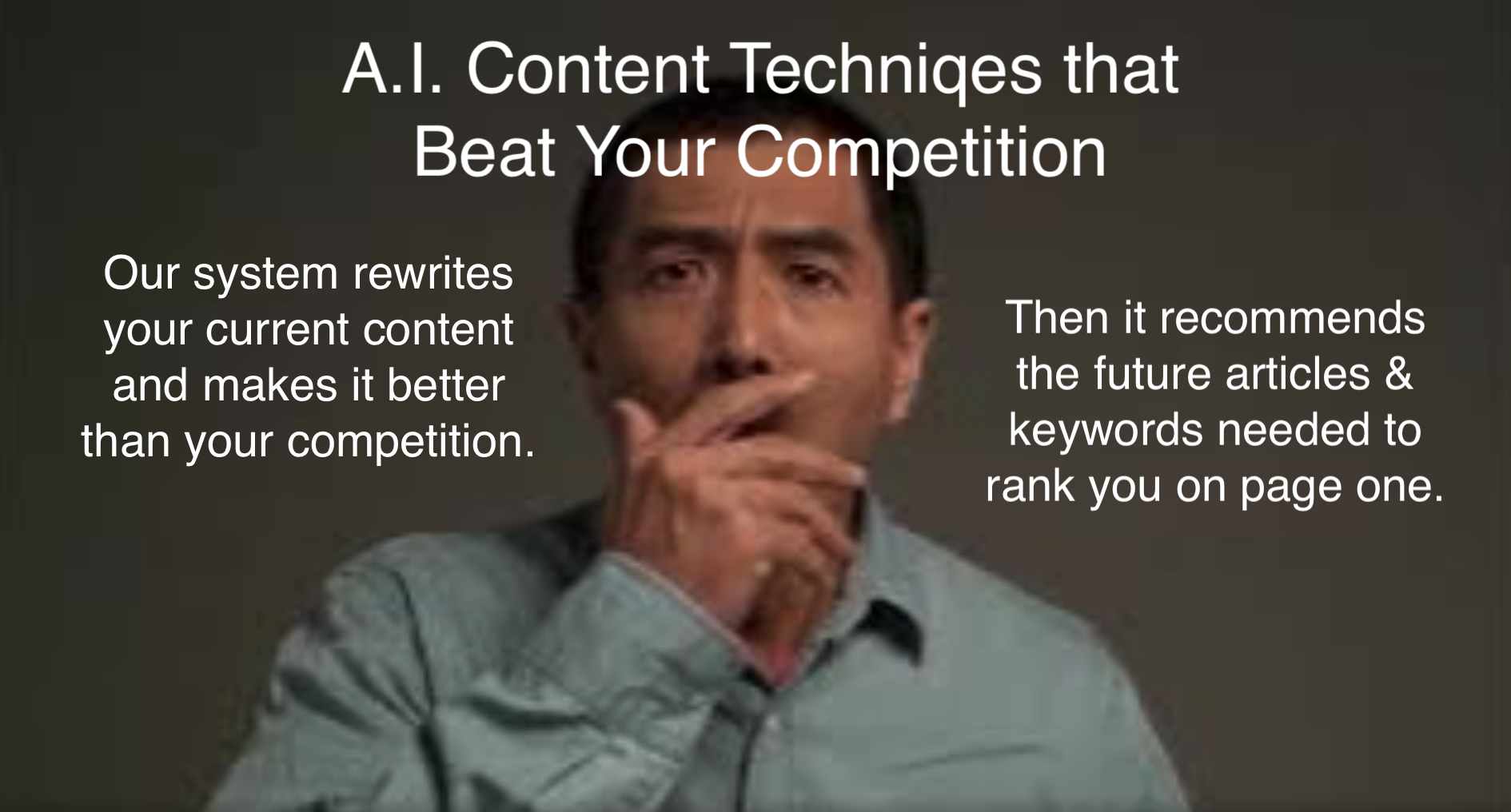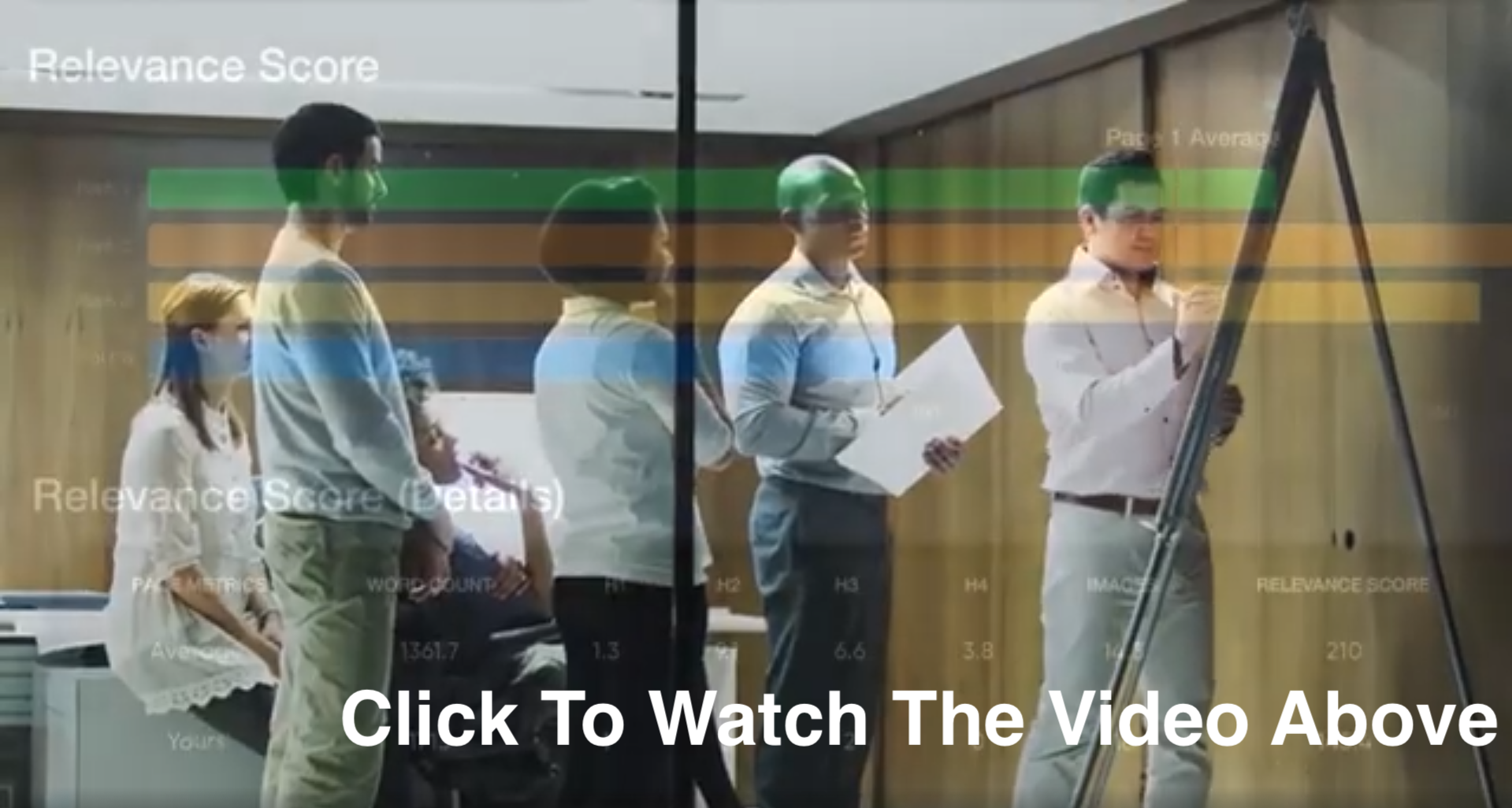Our On-Page tool outperforms the competition, as proven in our latest ranking case study. It analyzes your website like Google does, identifying key elements such as main content, sidebars, footers, headers, and advertisements.
We introduce the Stealth Write and ReWrite, powerful AI tools that are now live and ready to use. These tools provide you with high-quality content generation and rewriting capabilities, allowing you to create engaging and optimized articles effortlessly.
Our superior technology translates into case-study worthy traffic results. You’ll see a significant increase in organic traffic, which can lead to more attention, speaking gigs, podcasts, and interview opportunities.
Our brand new Version 9.0 includes Auto-Optimize, a revolutionary tool that injects related entities into your content automatically. This ensures your articles are more relevant and attractive to Google, leading to improved rankings..
Our services are designed to help you rank on Google for your most profitable terms. By leveraging our AI-powered tools, we can optimize your content, identify missing keywords, and discover the ideal Google category for your target term.
“I’m ranking pages that previously refused to rank and seeing more traffic every day.”
In today’s competitive online marketplace, possessing first page placements on Google can determine the destiny of your site and your profits. Advantageously, with the introduction of artificial intelligence (AI), digital ads specialists and SEO companies now possess a strong tool to automate and enhance their Google standings. Below I will explain how to make the best use of Artificial Intelligence in optimizing your webpages for SEO , with clear guidelines on employing this advanced technology to increase awareness of your website and its organic web traffic.

The essential starting point in utilizing AI to optimize your Google ranking is to collect and examine significant data. AI algorithms can rapidly process large amounts of information, allowing you to detect valuable observations regarding your website’s functioning, adversaries, search terms, and target demographic. Employ AI-based SEO tools to acquire information regarding keyword rankings, search frequency, click-through percentages, and consumer behavior trends, enabling you to make well-informed suggestions and recommendations for your content strategy.
Leveraging AI-based technology to analyze keyword rankings, search frequency, click-through percentages, and consumer behavior trends, businesses can gain valuable insights into their target demographic and optimize their webpage for maximum visibility and engagement. And by indexing the data acquired from AI-based technology, marketers can gain valuable insights into keyword rankings, search frequency, click-through percentages, and consumer behavior trends to better understand their target demographic.
By researching competitors’ click-through percentages, consumer behavior trends, and keyword optimization strategies, companies can gain a better understanding of their target demographic and gain a competitive edge by staying ahead of their competitors.
Here are some tools to consider if you were going to try and do this on your own.
Employing AI technology can be an effective method to expedite the keyword research process, but what terms will you need how many do you need to rank higher than your competitors? Our tool does the heavy lifting and knows exactly what content you need by utilizing Google’s own algorithm to get you there.
For going it on your own, try utilizing these content creation tools to identify relevant terms that correspond to your business objectives and increase search frequency.
As a webmaster, examining data related to the desire and activity of users helps to recognize the objective behind numerous search keywords and topics. Artificial Intelligence programs are able to determine long-term keywords, semantic variations, and understand user query patterns to further upgrade the content for improved content marketing strategies. By analyzing some of the search results, these AI programs can comprehend popular searches and help enhance the content and inform web development efforts.
Employing state-of-the-art algorithms, AI aids content creators in producing compelling material that not only attracts potential customers but also ranks well on Google, boosting their visibility in search results. Utilize AI-fueled content generation applications to fabricate top-grade, unique material and make certain it is optimized with concentrated keywords, titles, meta tags, and appropriate internal and external connections. AI can also assist in crawling and indexing your website more efficiently.
Data supplied by Artificial Intelligence can be advantageous in optimizing the quality of your material and enhancing its overall relevance, clarity, and attraction for ranking well on Google. Utilizing AI algorithms, systematic on-page optimization can be computerized by inspecting the website’s organization, HTML segments, and customer experience. Execute artificially intelligent programs to pinpoint and rectify technical glitches such as faulty links, recurrent content, slow page loading periods, and portability. Artificial Intelligence can also assist in optimizing meta tags, organized information, and structured data to promote better visibility in search engines.
Backlinks are an essential part of Google’s ranking infrastructure. Artificial Intelligence-based software can automate the backlink investigation process, distinguishing quality and reliable websites related to your field. Employ AI algorithms to rate the believability and pertinence of possible link origins, helping to decide on the best backlink prospects. AI can also give support in surveilling and administering your backlink profile to make sure its healthiness and value.
Here are some effective strategies:
By utilizing these content creation tools and strategies, you can effectively identify relevant terms that correspond to your business objectives. Remember to combine quantitative data from keyword research tools with qualitative insights from competitor analysis, trend analysis, social listening, and customer feedback for a well-rounded approach to keyword identification and content creation.
Or our software can do the work for you. Check out the video to see why our A.I software will outrank everyone.
It is vital to use AI-driven rank tracking software to keep an eye on keyword rankings, organic pageviews, click-through rates, and other measurements of performance for successful automation of Google rankings. Continuous monitoring and assessment of searches are required. Artificial Intelligence programs can spot tendencies, forms, and peculiarities, granting you to create decisions based on data for betterment and augmentation.
It is essential to regularly change and enhance your SEO tactics in line with the data and counsel rendered by AI algorithms, for AI is a progressive innovation that progresses through time. Analyze data consistently, track market movements, and stay current on algorithms to remain competitive.
Remember A.I. is a great tool, but the use of human’s for now will still do better than A.I. for content production. Don’t be too reliant on the non-human campaigns, feature writers and even other languages for variation. Take care of your clients and don’t make everything about money. Use the best platform you can and make it affordable when possible. A good marketing strategy with a solid article will become the number one solution of your client.
Contact us if this is starting to sound like what you want.
Using Artificial Intelligence, SEO professionals can optimize and expedite their ranking in Google. With the acquisition of data, analyzing keywords, revising content, page improvement, link generation, and surveying performance, AI gives invaluable advice and proposals to maintain best optimization practices. Incorporating AI into your SEO plan can provide limitless opportunities, increase organic visibility, and bring enduring success in the changing digital world.
It is essential to regularly change and enhance your SEO tactics in line with the data and counsel rendered by AI algorithms, for AI is a progressive innovation that progresses through time. Analyze data consistently, track market movements, and stay current on algorithms to remain competitive.
To increase user engagement on your website, consider implementing the following tactics:
Using Artificial Intelligence, SEO professionals can optimize and expedite their ranking in Google. With the acquisition of data, analyzing keywords, revising content, page improvement, link generation, and surveying performance, AI gives invaluable advice and proposals to maintain best optimization practices. Incorporating AI into your SEO plan can provide limitless opportunities, increase organic visibility, and bring enduring success in the changing digital world. By utilizing natural language processing, your SEO plan can identify key phrases and topics that your target audience is searching for, allowing you to create content that is tailored to their needs and interests, thereby increasing organic visibility and helping to bring enduring success in the ever-evolving digital world.
When evaluating links, it’s essential to assess their quality, relevance, and potential advantages for your website. Here are some key factors to consider:
Using Artificial Intelligence, SEO professionals can optimize and expedite their ranking in Google. With the acquisition of data, analyzing keywords, revising content, page improvement, link generation, and surveying performance, AI gives invaluable advice and proposals to maintain best optimization practices. Incorporating AI into your SEO plan can provide limitless opportunities, increase organic visibility, and bring enduring success in the changing digital world.
By implementing an effective SEO plan, businesses can reap the benefits of increased organic visibility, greater reach, improved customer engagement, and enhanced brand recognition, all of which can lead to sustained success in the ever-evolving digital landscape.
When you are ready to try this on your own there are there are several cost-effective ways to monitor search engine rankings. Here are some options:
It is essential to regularly change and enhance your SEO tactics in line with the data and counsel rendered by AI algorithms, for AI is a progressive innovation that progresses through time. Analyze data consistently, track market movements, and stay current on algorithms to remain competitive.
Using Artificial Intelligence, SEO professionals can optimize and expedite their ranking in Google. With the acquisition of data, analyzing keywords, revising content, page improvement, link generation, and surveying performance, AI gives invaluable advice and proposals to maintain best optimization practices. Incorporating AI into your SEO plan can provide limitless opportunities, increase organic visibility, and bring enduring success in the changing digital world.
If you aren’t ready to do this on your own and you would rather work with a company that has been doing SEO since 2005 check us out and our AI SEO tools.



